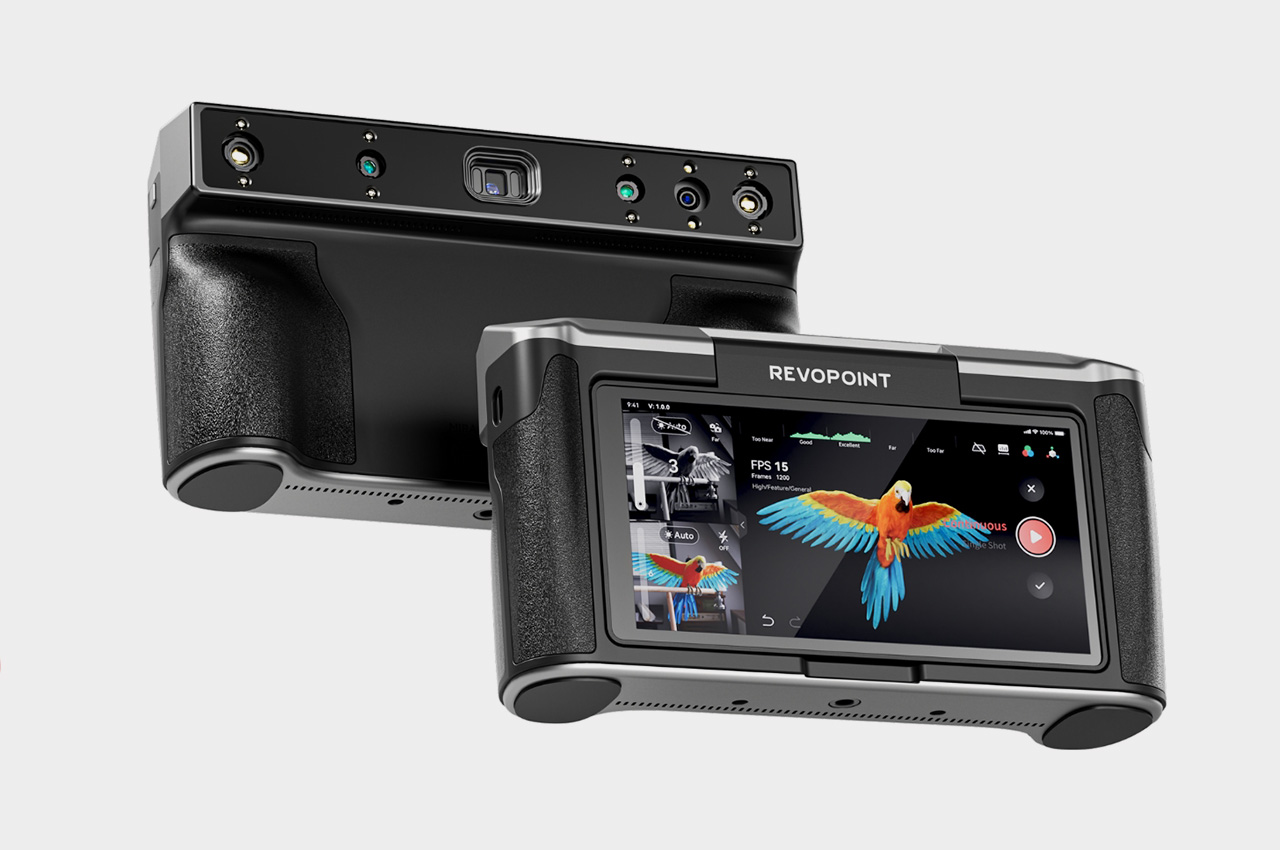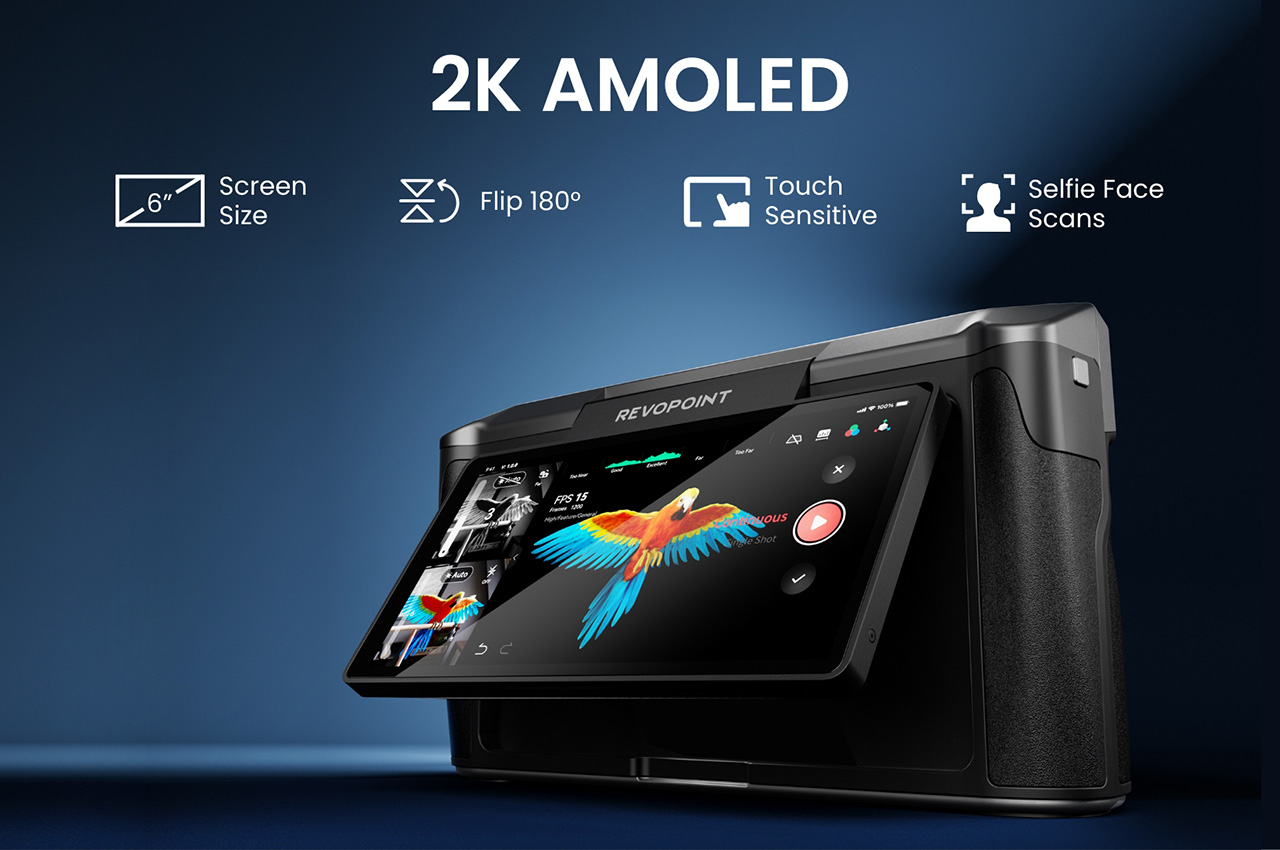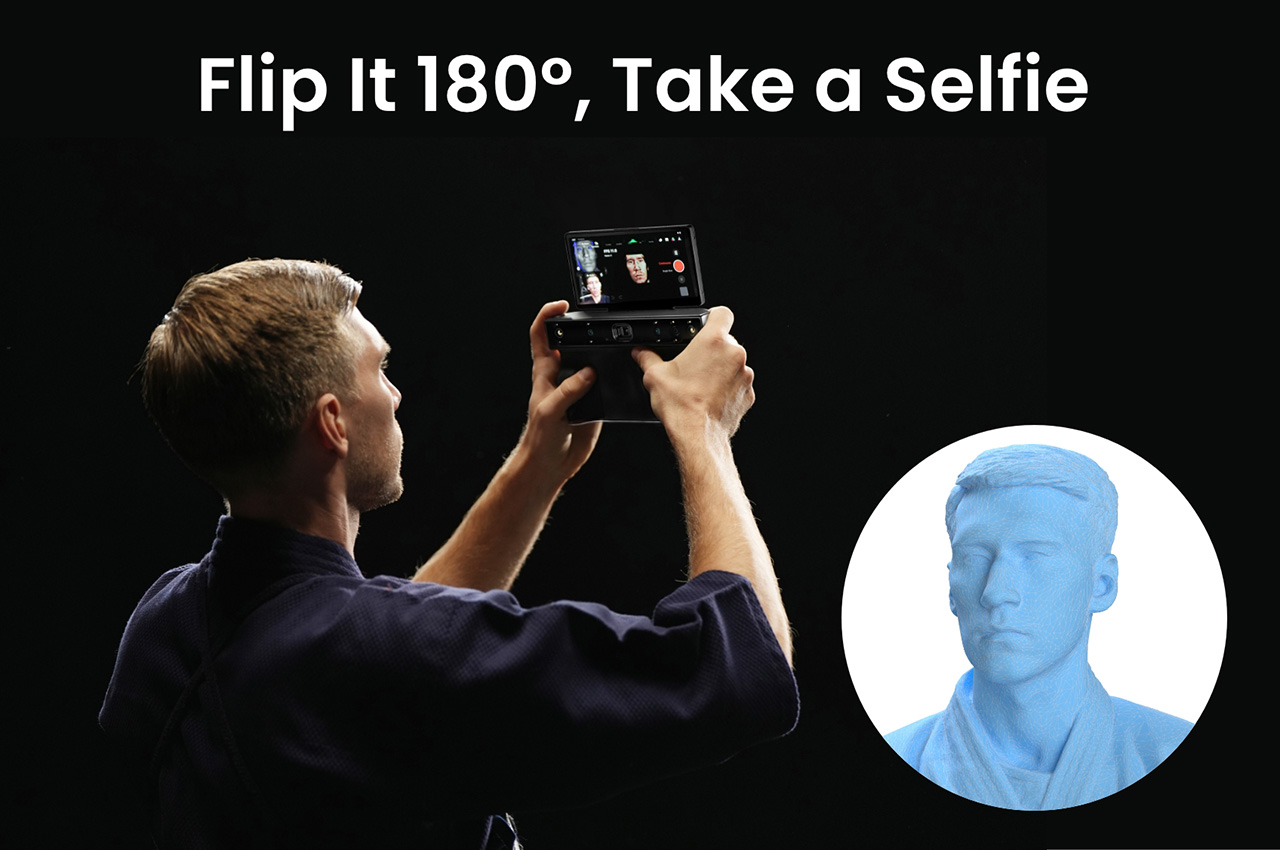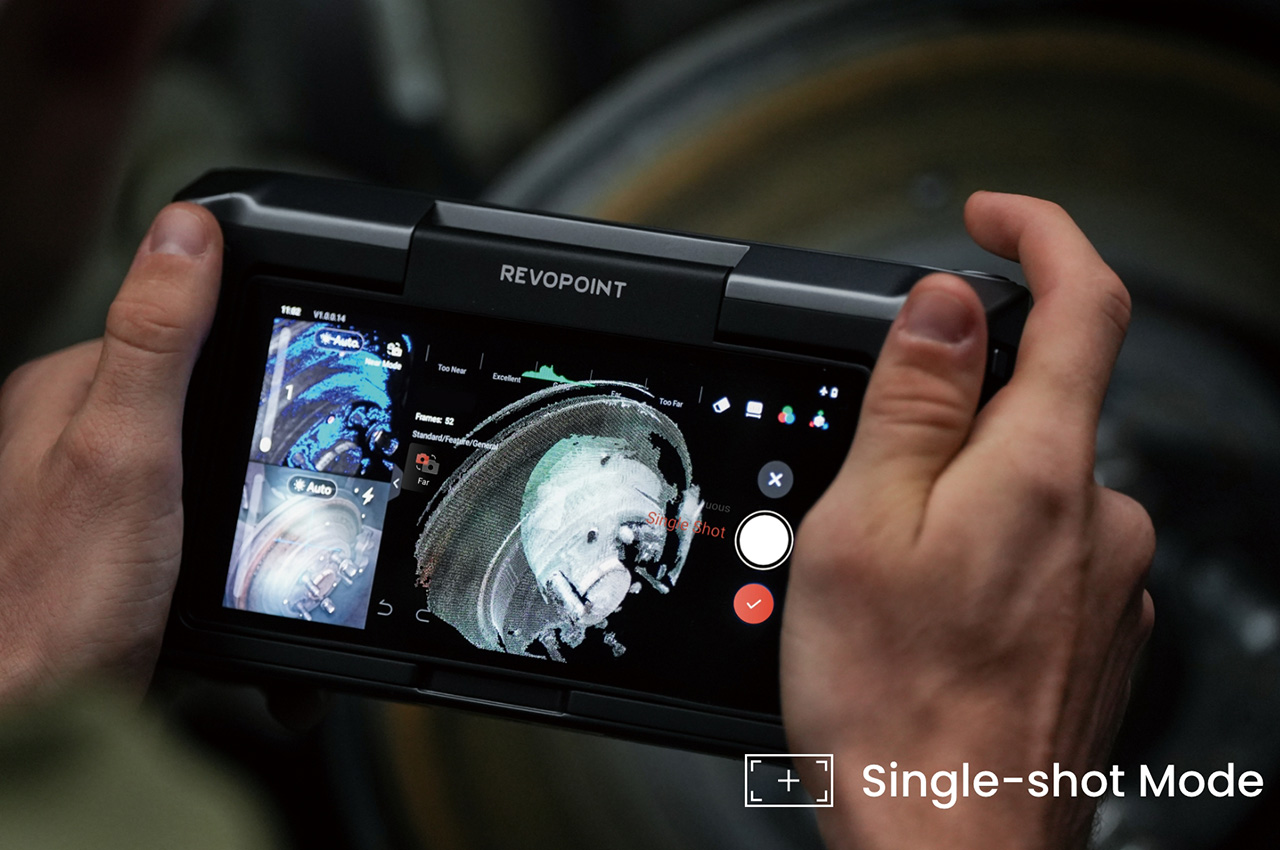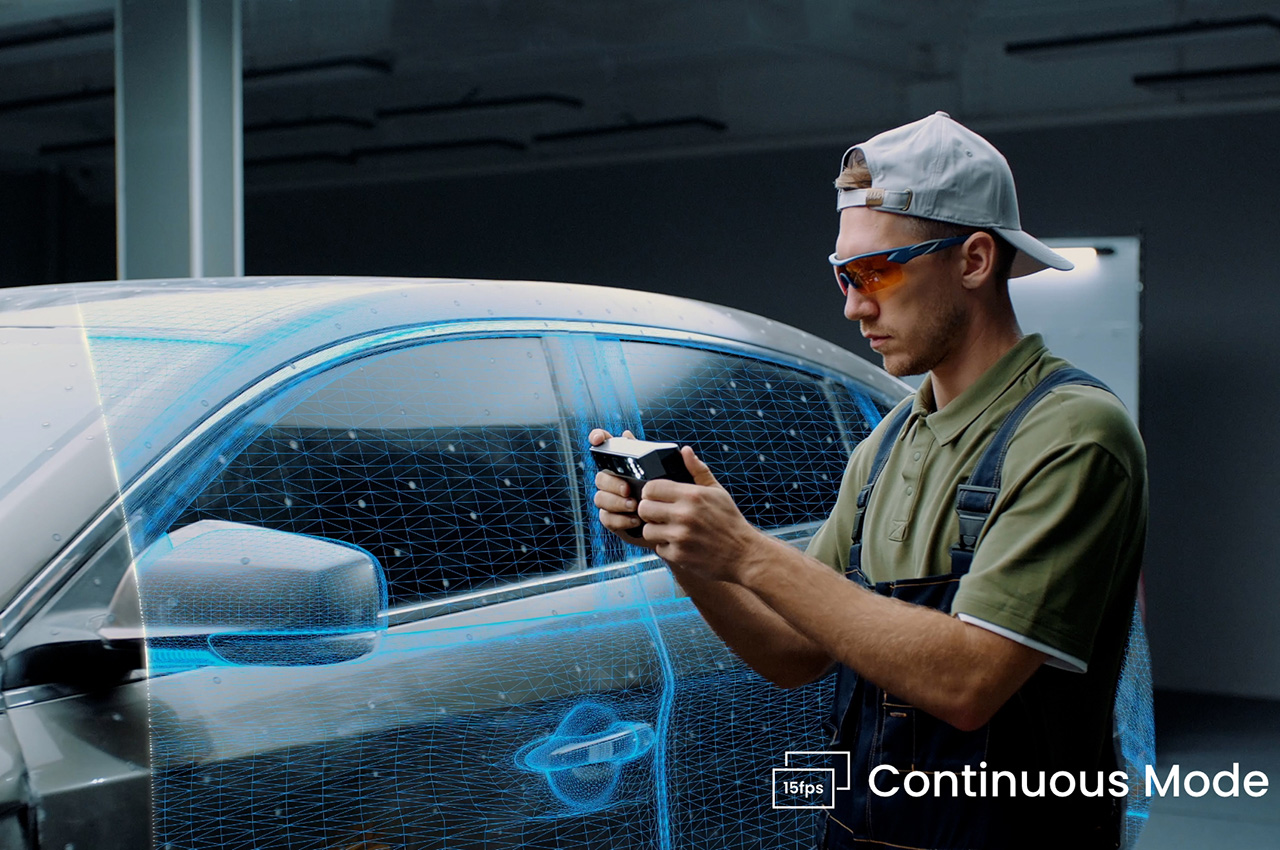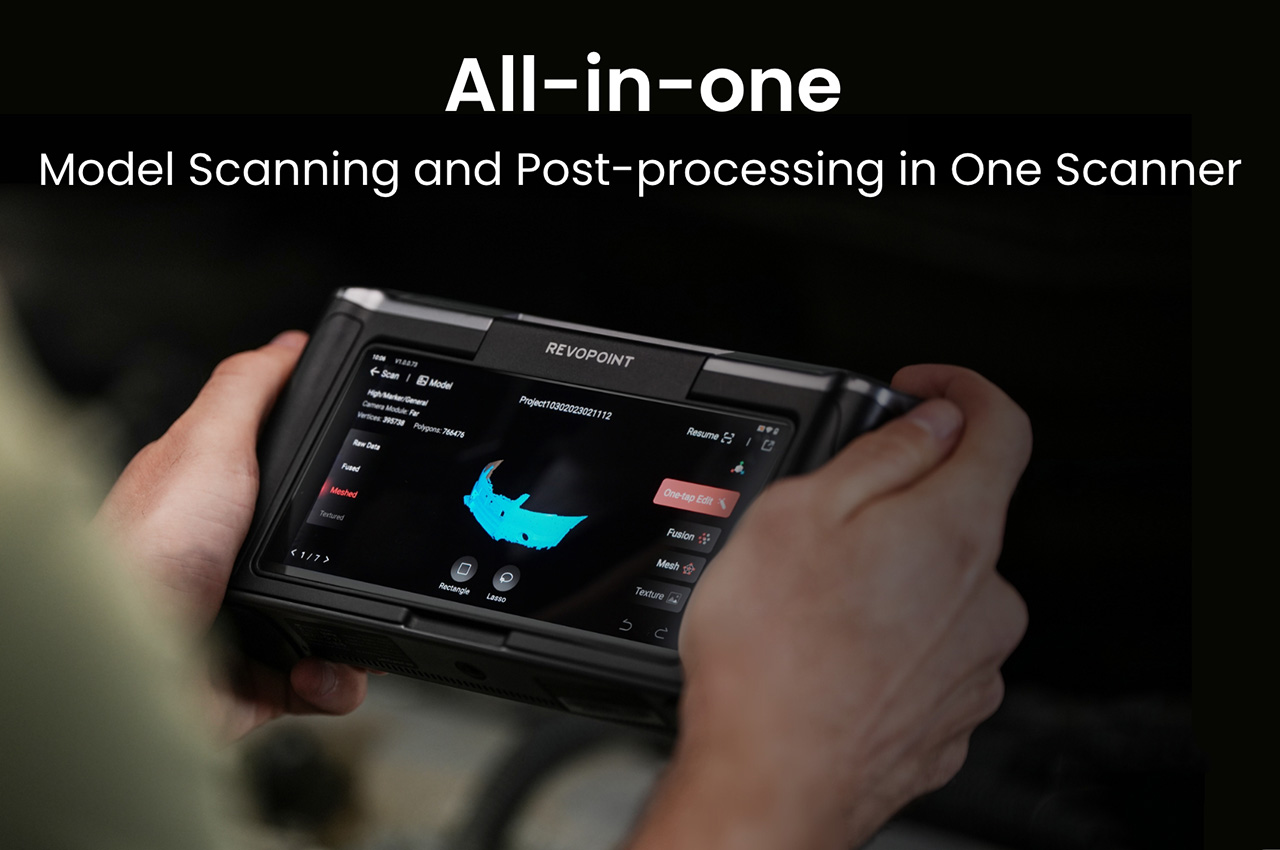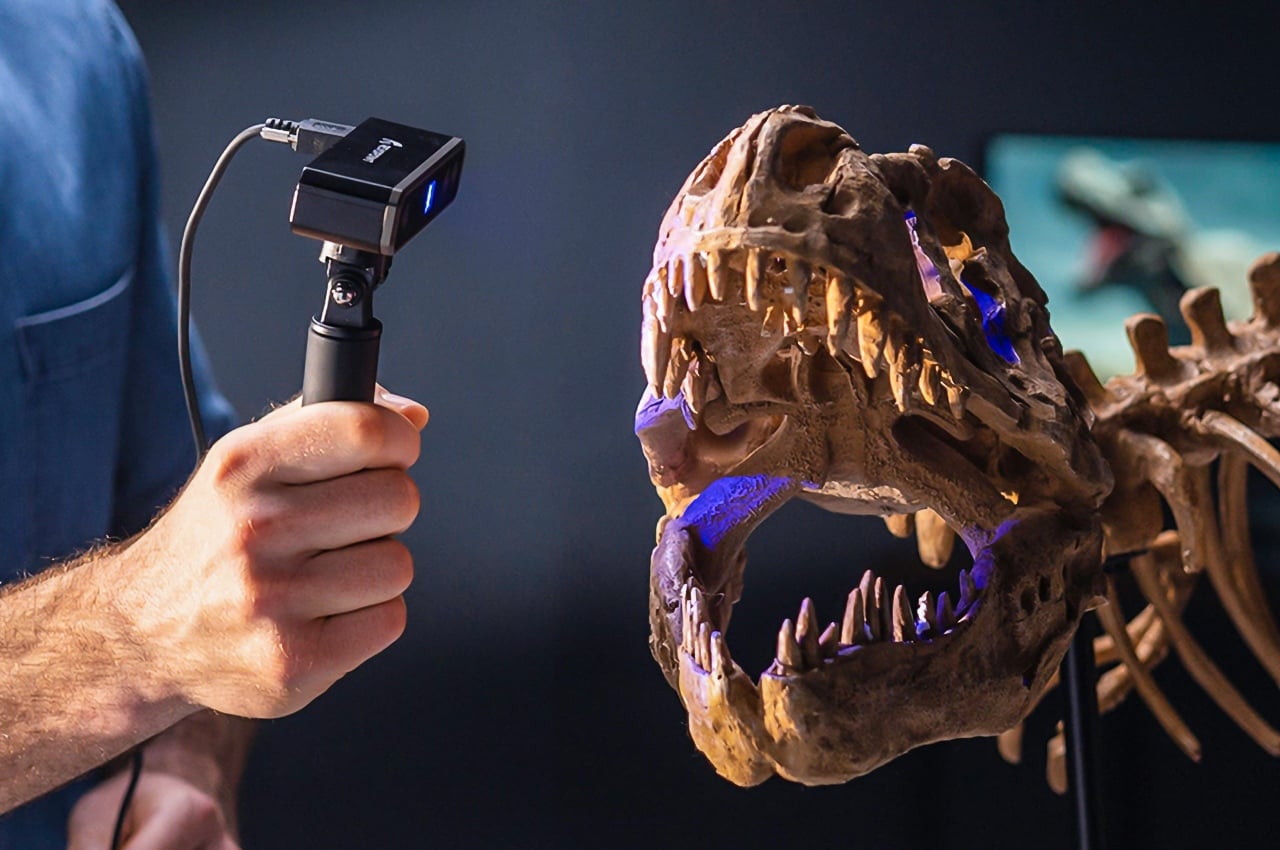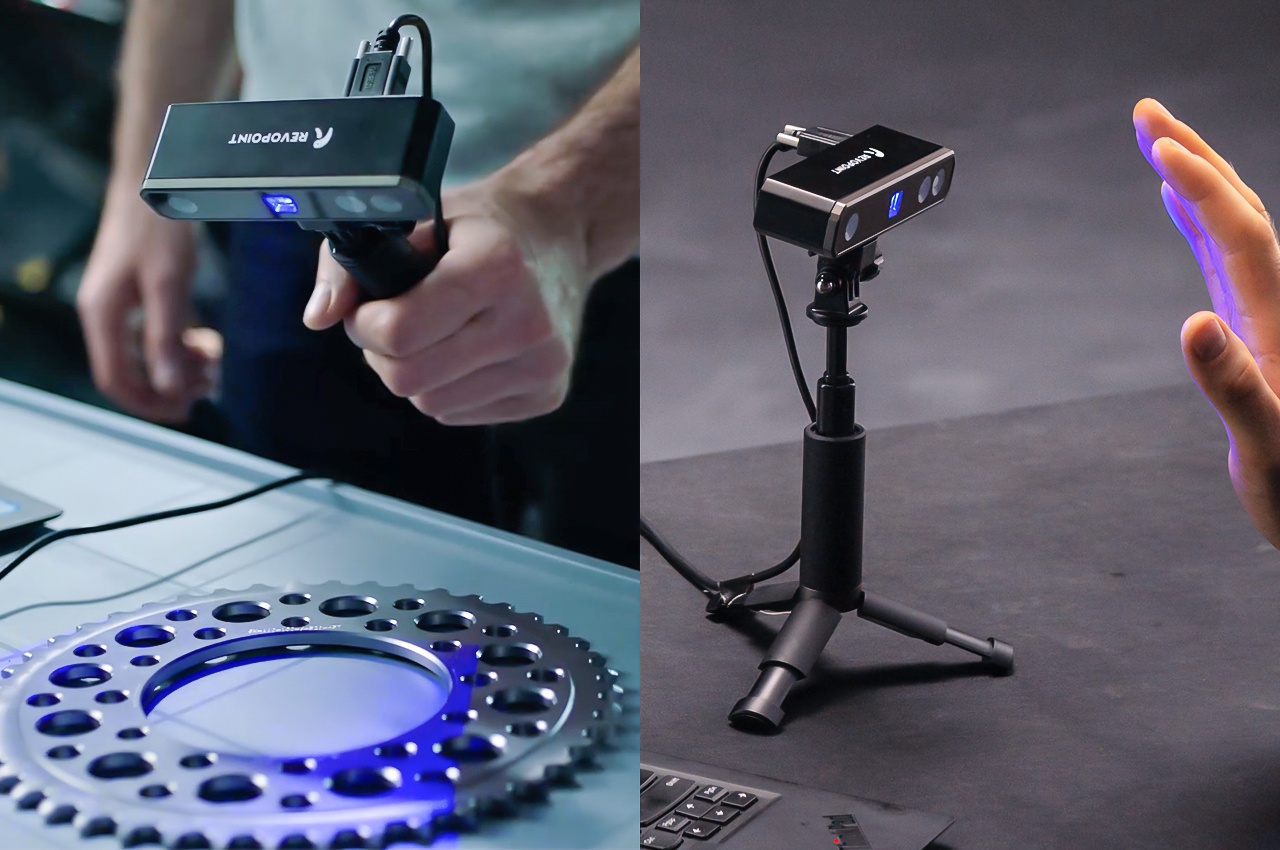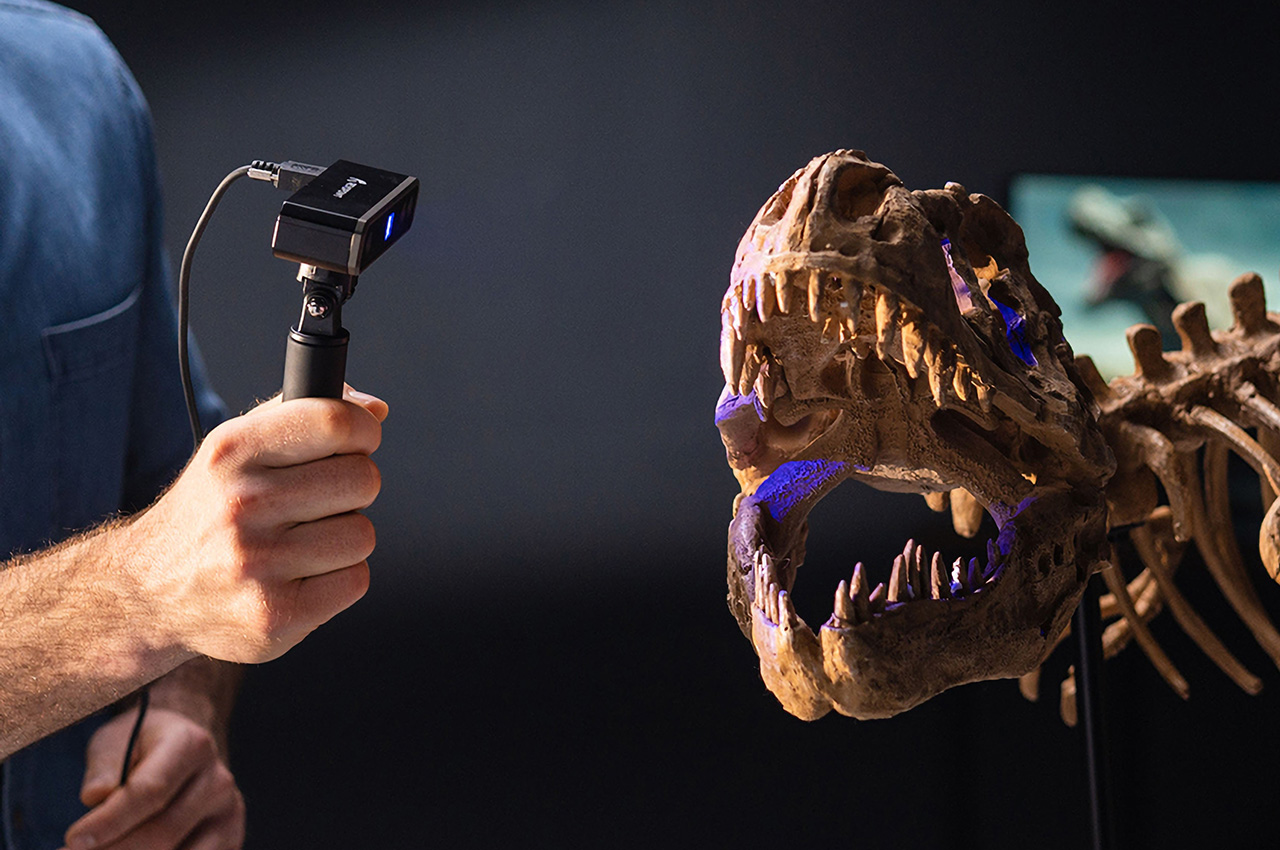Observation and visual understanding play an incredibly key role in the life of every creative and technical professional… so instead of living in the Stone Ages and analyzing things with just your eyes, consider adding a 3D scanner to your toolset. Gone are the days when 3D scanners were clunky, complicated, and expensive – the Revopoint MIRACO is compact, highly intuitive, and offers pro-grade scanning. No larger than a handheld gaming console or a DSLR camera, the Revopoint MIRACO works as a standalone scanner, letting you take crisp 3D scans in vivid color without needing any extra software or even an external computer. A 2K AMOLED screen lets you see what you record, and an ergonomic design allows you to hold the scanner in your hands, moving it around to scan objects, scenes, or even humans.
Designer: Revopoint
Click Here to Buy Now: $1171.10 $1299 (total of $127.90 off with coupon code ‘BRANDYD10’). Hurry, deal ends in 48 hours!
The folks at Revopoint have practically perfected the art of 3D scanning with their extensive range of products like the POP, RANGE, and MINI series of scanners, but the MIRACO is distinctly different. Most scanners are designed to be compact but still need to connect to an external device like a phone, tablet, or desktop/laptop to let you preview the scan while in progress. The MIRACO’s Red Dot: Best of the Best Award-winning design removes that barrier, giving you an all-in-one device that packs bleeding-edge scanning technology, along with a flip-out display that lets you control the scanner as well as preview what you’re scanning like a viewfinder. No cables, no PC, no external device, the MIRACO is a solo beast that scans in crisp detail with up to 0.05mm accuracy and 48-megapixel color.
Quite like most professional cameras, the display folds out too, allowing you to angle-adjust it so you can see what you’re capturing even at odd positions and angles… but more impressively, it flips out 180° to face forwards, so you could use it to scan yourself too.
The camera-shaped design isn’t an accident, it’s completely intentional. Designed specifically for handheld use by both first-timers as well as scanning experts, the format feels incredibly intuitive, allowing you to correctly use the device right out of the box. Hold it as you would a camera, and either click individual photos from multiple angles in ‘single shot mode’, or take a continuous video of your subject in ‘continuous mode’. The Single Shot Mode is perfect for precisely scanning small to medium-sized objects with stunning accuracy, while the Continuous Mode gives you 15fps scanning speeds and allows you to grab larger objects with Far-mode while going farther away for wider captures, and stepping near to grab details with Near-mode. The MIRACO boasts a maximum scan volume of 4000mm x 4000mm x 4000mm, allowing you to practically even scan objects as large as most cars.
An advanced depth camera captures 3D details with accuracy, relying on a 9-axis IMU for position tracking and a 48MP RGB camera for color details when you want to capture color information too. An 8-core processor crunches all the data, saving scans to the MIRACO’s 256GB hard drive. Revopoint offers a choice between a regular and a Pro version of the scanner – one with 16GB of RAM capable of capturing between 4000 to 5000 frames, and the upgraded Pro version with 32GB RAM capturing anywhere between 8000-10000 frames depending on whether you’re scanning in color or just 3D.
Scans get saved on the device, although WiFi connectivity lets you easily wirelessly transfer files to other devices – or rely on the USB-C to physically transfer files or even connect an external display to your MIRACO. A built-in 5000mAh battery powers the MIRACO for up to 2 hours of continuous scanning (capturing depth and color with that accuracy definitely requires a lot of energy), while the MIRACO’s 35-minute fast charge to 80% ensures it’ll never be out of action for long.
The handheld scanner is quite literally every creative and technical professional’s secret weapon. While most industrial designers, engineers, interior designers, and automotive designers rely on inefficient gauges, calipers, and measuring tapes (and while filmmakers and VFX artists rely on massive expensive scanning rigs), what the Revopoint MIRACO does feels like nothing short of magic. The compact device turns anything in front of it into a 3D model with surgical-level accuracy, making it perfect for modeling, designing, reverse engineering, prototyping, and performing various 3D-adjacent activities. Whether you go for the Revopoint MIRACO or the MIRACO Pro, your kit comes with everything you need to complete successful scans, including the device, Near-mode calibration boards, a power cable and adapter, a scanner bag, cleaning cloth, tripod, a sample bust, markers, a wrist strap, and even a portable turntable.
Click Here to Buy Now: $1171.10 $1299 (total of $127.90 off with coupon code ‘BRANDYD10’). Hurry, deal ends in 48 hours!
The post This All-in-One 3D Scanner Belongs In Every Designer and Engineer’s Arsenal first appeared on Yanko Design.
